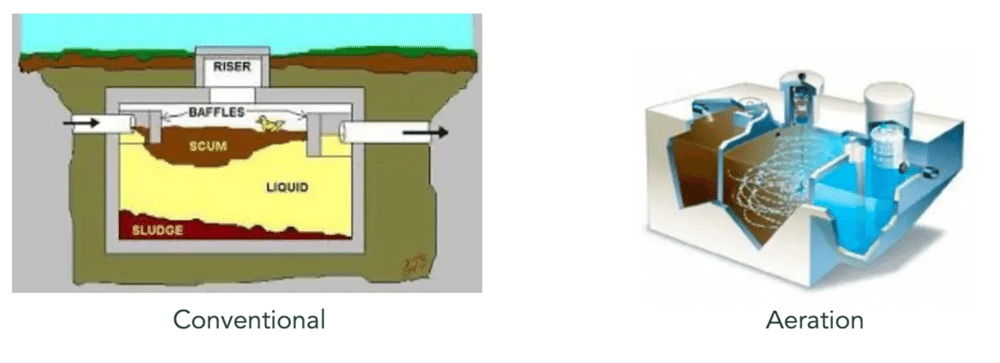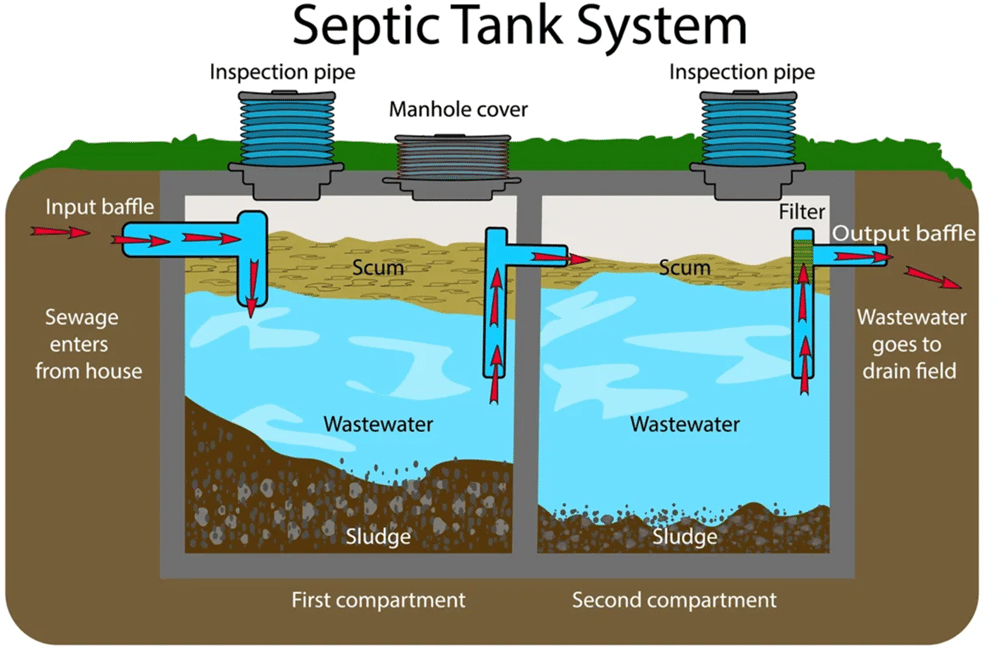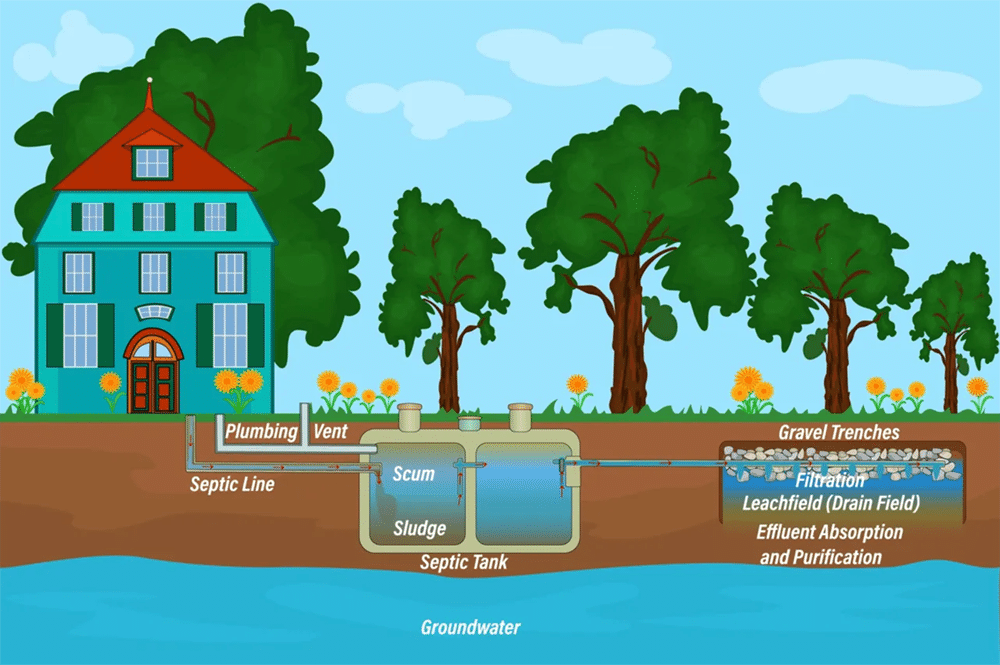Do I Really Need To Know How My Septic Tank Operates?
If you’re like most people, you probably take your septic tank for granted and may not really understand how it works. Or may not want to think about it! We totally understand this, but we also think it is important information to know so you can be a responsible septic tank owner!
Aeration Septic System Vs. Conventional
There are several different types and styles of septic tanks out there such as concrete, fiberglass, and plastic. We’re partial to the concrete ones of course; but, we install and service all types. Some are more advanced and have aeration filters, while others are more conventional. We explain the difference between the two here.

Within this article, we’ll talk about a conventional septic tank so you can get a basic understanding of how one operates. You’ll always want to consult a Rex Vault professional first when trying to decide which option would work best for your needs!
The Role Of Septic Tank Bacteria
The journey starts inside the house. When you flush the toilet or wash a load of laundry, the wastewater flows from the house into the underground septic tank. Bacteria living inside the tank begin to break down the solid material in the wastewater and actually begin to “clean” the water. This is why we often suggest limiting the amount of cleaners and detergents used so as not to kill the bacteria. It is also very important to be mindful of what kind of materials you are putting down your drains since not everything can be broken down by bacteria. You may also sometimes see companies adding live bacteria to the septic tank in hopes of enhancing the bacteria’s cleaning function. We believe this can sometimes be helpful but really is on a case-by-case basis.

Next Steps In The Septic Tank
As the bacteria are breaking down and cleaning the water, two different layers are created within the septic tank. A sludge layer and a scum layer. The sludge layer is composed of inorganic solids and the byproducts from the bacteria’s digestion of the solid material. This layer settles at the bottom of the tank. The scum layer is primarily made up of grease, fats, and oil that floats to the top of the tank. Issues start happening when too much sludge or scum accumulates in the tank. This is why regular pumping is so important!

How We Get Clean Water From The Septic Tank
Between these two layers is the remaining pre-treated water also known as effluent. This water flows through the outlet pipes in the septic tank and into perforated pipes that are in the drainfield. The right kind of soil conditions is an important key to the effectiveness of the drainfield. Sandy soil tends to drain very quickly, meaning the effluent won’t get treated well enough. While clay and silt soil has a hard time draining. Different soil conditions may require different versions of a drainfield. The water seeps out from these pipes where it gets filtered even more by the soil and gravel in the drainfield. The soil will absorb any leftover bacteria so that by the time the water reaches the underground aquifer, it is clean enough to drink!

Final Thoughts
Now that you know the inner workings of a septic tank, you can better understand the importance of regular maintenance and doing your part to keep your system healthy! As always, don’t be afraid to reach out to one of our Rex Vault pros with any questions about your system.